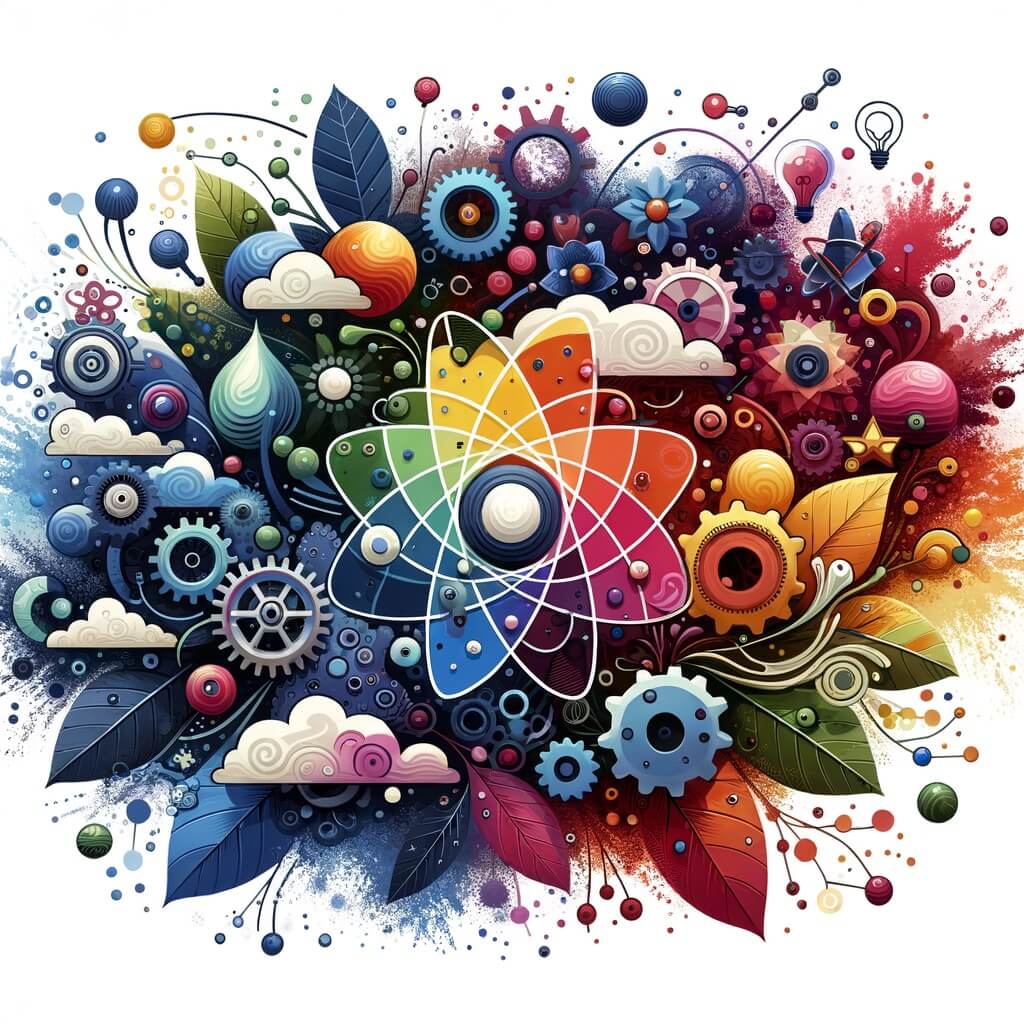Blending diverse fields to create innovative concepts can lead to fascinating results. Here are several other cross-disciplinary ideas that combine seemingly unrelated fields, opening up new possibilities for exploration, education, and artistic expression:
- Quantum Mechanics and Dance: Choreographers could work with physicists to create performances that explore and illustrate the principles of quantum mechanics, such as superposition and entanglement. Dancers could represent particles moving in a space where traditional laws of physics do not apply, making complex scientific concepts more accessible and visually captivating.
- Architecture and Neuroscience: An interdisciplinary approach could explore how building designs can influence mental health and cognitive function. Architects and neuroscientists could collaborate to design spaces that enhance concentration, improve mood, or stimulate memory, leading to innovations in the construction of educational institutions, workplaces, and homes.
- Gastronomy and Virtual Reality (VR): Chefs and VR developers could collaborate to create immersive dining experiences where diners wear VR headsets to enhance the flavors of their food with corresponding visual and auditory stimuli. This could transport diners to different environments or tell a story with each course, revolutionizing the concept of eating out.
- Fashion Design and Biomimicry: Fashion designers could work with biologists to create sustainable and innovative materials inspired by nature. For example, creating fabrics that mimic the thermal properties of bear fur or the water repellency of lotus leaves. This approach could lead to the development of clothing that is not only environmentally friendly but also significantly enhances comfort and functionality.
- Cinematography and Psychology: Filmmakers and psychologists could collaborate to develop films that employ specific visual techniques, colors, and sound designs known to evoke particular psychological responses. These films could be used as therapeutic tools, helping viewers to cope with stress, anxiety, and depression through carefully crafted visual and auditory experiences.
- Poetry and Augmented Reality (AR): Poets and AR developers could team up to create interactive poetry experiences where readers can see and interact with visual representations of the imagery within a poem through their smartphones or AR glasses. This could transform readings into dynamic events that provide deeper understanding and appreciation of the poetic texts.
- Music Therapy and Artificial Intelligence (AI): Combining music therapy with AI could lead to the development of personalized therapeutic music sessions. AI algorithms could analyze a person’s emotional state and preferences to create custom music compositions designed to improve mental health outcomes.
- Botany and Fashion: Integrating live plants into wearable fashion could be explored by botanists and fashion designers. This concept could lead to living garments that interact with the environment, such as changing color based on air quality or producing oxygen, pushing the boundaries of eco-fashion.
- Space Science and Visual Arts: Artists and astronomers could collaborate to bring the wonders of space closer to Earth through art. By creating accurate yet artistic representations of celestial events, galaxies, and astronomical phenomena, this collaboration could inspire public interest in space science and provide a new perspective on our universe.
- History and Gaming: Historians and game developers could work together to create historically accurate video games that educate players about specific periods or events while engaging them in gameplay. These games could serve as powerful educational tools, allowing players to experience historical contexts firsthand, fostering a deeper understanding of history.
These ideas showcase the potential for innovation that lies at the intersection of different disciplines, demonstrating how combining diverse fields can lead to unique and groundbreaking concepts.
